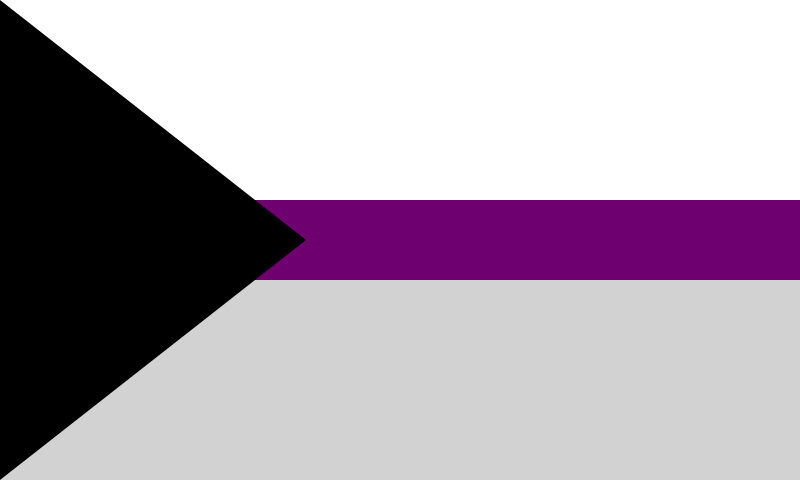Culture June 21, 2017
A more specific, symbolic and subtle flag to wave at your pride events.


As Pride Month continues and rainbow flags are everywhere in sight, it’s important to bring attention to and support all of the extra “+’s” in the LGBTQ+ community.
One sexuality that is often neglected or misunderstood, even during a month celebrating sexual and gender acceptance, is demisexuality.
You can read more about what demisexuality is here, but in short, demisexual people don’t feel sexual attraction without a deep emotional connection.
No, they’re not just picky about who they choose to have sex with; demisexuals have literally no sexual attraction to anyone, no choice about it, until they form an emotional bond. This is why they so often align with asexuality (feeling no sexual attraction at all).
In fact, the demisexual pride flag was designed using the asexual flag’s colors, but arranging them to distinguish themselves.
The asexual flag (above) has black, gray, white and purple, all arranged in even horizontal stripes.
The demisexual flag (below) has a black triangle shooting out from the left side, a thick white horizontal line on top, a thick gray line on the bottom and a thin purple stripe in the middle.
The colors in the flags represent different aspects of the communities, three overlapping and one displaying an important distinction.
Both flags have black as a symbol for asexuality and purple for community. The gray represents “Gray-Ace” and demisexuality on both flags as well.
The meaning of the white differs, as it represents sexualty on the demisexual flag and “non-asexual partners and allies” on the asexual flag.
No matter how you experience attraction – or how you identify – it’s always important to appreciate, validate and support others.
So share the information about the demisexual flag meaning to create a safer space for all of the “+’s” in the LGBTQ+ community.